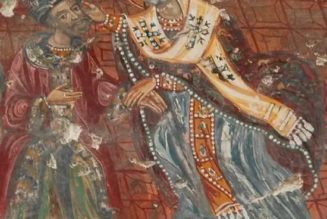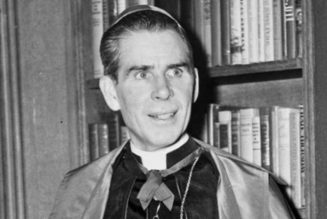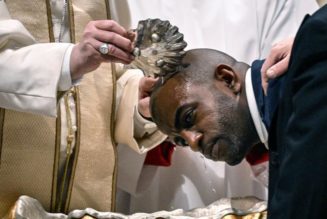Here at the Mattingly abode in East Tennessee, the Christmas Tree is finally up and soon we will start playing our favorite playlists of Christmas music.
In other words, this past Sunday was the final day of the ancient season that, for Orthodox Christians, is called Nativity Lent. It is the second longest season of repentance and fasting on the Christian calendar, after the Great Lent that leads to Easter, or Pascha in Eastern churches.
In the churches of the West, the season before the 12 days of Christmas is called Advent.
In shopping malls and mass media, of course, the long, glitzy, commercialized season that precedes Christmas is (wait for it) known as “Christmas.” The debate is whether “Christmas” begins for Halloween, after Halloween or after Thanksgiving.
Thus, news consumers don’t see a lot of Advent stories. In 2008, M.Z. Hemingway explained why in a classic (read it all) December 23rd GetReligion post — “The war on Advent.” Here is how that opened:
Of all the seasons of the church year, the first — Advent — is definitely the one that leaves me feeling most out of touch with my fellow Americans. While everyone else is frantically shopping, decorating, partying, those Christians who mark Advent are in a period of preparation and prayerful contemplation. The disciplines of Advent include confession and repentance, prayer, immersion in Scripture, fasting and the singing of the Great O Antiphons and other seasonal hymns. I’m fond of “Lo, He Comes With Clouds Descending,” “The Angel Gabriel from Heaven Came,” “Savior of the Nations, Come” and many, many more. Advent may, in fact, be the best season of the church year when it comes to hymnody.
The season is marked by millions of Catholics, Lutherans, Episcopalians and many other Christians, but not only do you rarely see any media coverage of it, the media actively promotes the secular version.
Advent ends on Christmas Eve with the beginning of the Christmas season. In America, the end of Advent coincides with the end of the secular Christmas season/shoppingpalooza.
I bring this up for two reasons.
First, I wanted to let readers know that GetReligion will stay open for business during the next 10 days or so, but with fewer posts (unless there is major news to discuss).
Second, another former GetReligion scribe — Sarah Pulliam Bailey — just wrote a fine piece for the Washington Post that ran with this headline: “Instead of raucous holiday parties, some opt for a candlelit Advent season of longing and hope.”
The basic theme is this: If ever there was a year that cried out for a calm, healing Advent, it was the coronavirus-plagued 2020. Pulliam’s piece opened like this:
In the weeks leading up to Christmas, Joanna Kretzer Chun would bounce from church choir rehearsals to holiday parties around Washington. With the pandemic putting life on pause this year, Chun spends her nights lighting Advent candles nestled in a wreath in her living room.
As many Americans remain home during the holiday season, some are choosing to replace the busyness of the season with traditions from the Christian season of Advent, such as opening a daily calendar with chocolate inside, lighting candles and singing hymns such as “O Come, O Come, Emmanuel.” The month-long period of Advent, which starts the fourth Sunday before Christmas, is meant to symbolize the period of anticipation for Jesus’ birth while reflecting on the brokenness of the world.
Chun said she relates to the darkness people felt in the scriptures before Jesus’ arrival. Her husband lost his job earlier this year, and someone recently stole their bikes.
Did you catch that bite of theology that points to the news hook for this timely piece? The world is broken and it is waiting for healing.
Now, I must admit that I was disappointed that this feature didn’t mention the Orthodox season of Nativity Lent, which is a week longer than Advent. That adds another candle, in homes that have wreaths. (The Orthodox usually have incense and candles on our home altars, already.)
The key element of Sarah’s feature is that, for many Americans, Advent is a season that they knew nothing about when they were growing up, as was the case with Chun.
Congregations in most Protestant denominations do not observe Advent and then the 12-day Christmas season that BEGINS on December 25th. Christmas parties, concerts and other events start immediately after Thanksgiving and then roll on through the month of December and then STOP after Christmas Day.
However, Advent seems to be catching on in a few churches, even in evangelical Protestant settings. This is usually the news hook that leads to feature stories about Advent.
This year, Advent was relevant for other reasons. Here is a key chunk of Sarah’s story, which stresses the serious, sobering “brokenness” themes at the heart of this season:
Living in the suburbs of New York City, the Rev. Fleming Rutledge, an Episcopal priest, is no longer traveling and speaking like she once did and is focused on getting three meals on the table each day. Rutledge, whose widely praised volume of sermons on Advent was published in a book, is discouraged to see how many of the Advent themes in contemporary churches are toned down to be about love, joy and peace — instead of death, judgment, heaven and hell.
“Americans tend to be very upbeat, always looking on the sunny side, denying death and darkness, looking for every conceivable way to avoid the unpleasant things of life,” Rutledge said. “What’s necessary to see the light of the candle is the darkness surrounding it. In order to grasp the depths of hope, we need to take a fearless inventory of the darkness.”
While many churches — including Roman Catholic, Episcopalian, Anglican and Lutheran — formally observe Advent in their services, many Christians, Rutledge said, are latching on to Advent calendars and wreaths as fads.
“Advent means that evil and sin will be confronted, judged, condemned and destroyed. It will mean redemption,” she said. “This is not just good news. It’s the greatest news that has ever been proclaimed. It’s the hope by which we live. It’s the opposite of sentimental.”
Now, Nativity Lent is drawing to a close and it’s almost time for Christmas.
Bravo to the Post editors who green-lighted this timely Advent feature. Read it all.









